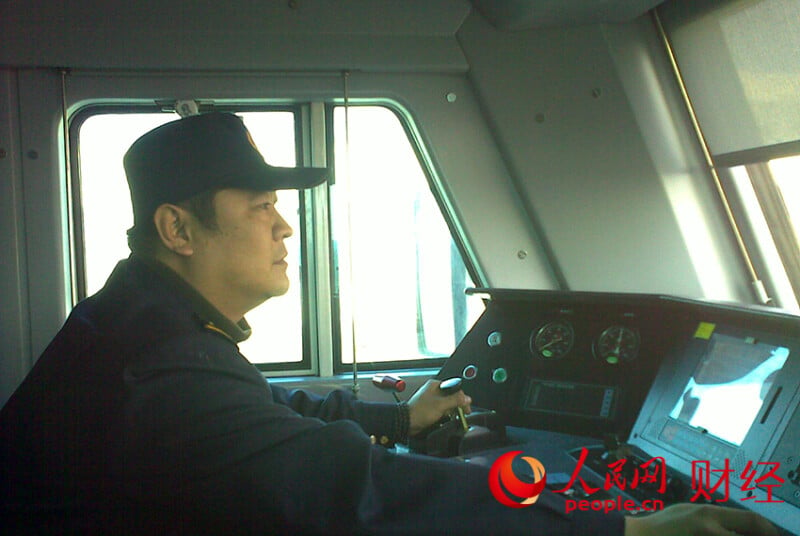Incredible Photos Show the Same Chinese Train Driver 26 Years Apart

When train driver Han Junjia first started his career in 1992, the railway industry in China operated on steam locomotives that could just about manage 30 miles per hour.
But since the 1990s, China’s economy underwent one of the most dramatic transformations in modern history, quintupling its GDP, and with that came lots of investment — including on the railway system.
For Junjia, it meant that he went from working on noxious steam trains to state-of-the-art bullet trains in just 26 years. Two photos, one showing him standing next to an enormous steam engine train, and another showing him standing next to the Fuxing bullet train, capture China’s incredible growth like no other medium can.
The photo of Junjia standing next to the steam trains looks more like it was taken than the 19th century, never mind the end of the 20th century. Contrast that with the bullet train photo, a luxury mode of transport that very few countries have.
“The windows in the driver’s cab had to be open no matter what the season was because we needed to lean out to watch the line and signals ahead,” Junjia said of the time he used to pilot steam trains.
The People’s Daily reported back in 2018 that when he first came to work, Junjia brought a multipurpose lunchbox that was used as a cooking pot to reheat rice, a water carrier, and a seat to rest his weary legs.

He became a diesel locomotive driver in 1996 and was thrilled by the upgraded cabin which boasted a temperature detector, rear view mirror, and monitoring system. But the diesel trains were loud and he was constantly shouting to his colleagues all day to make himself heard.
“Plus, I would always smell like diesel oil. My wife always complained that my clothes still smelled after they were washed,” he told China Daily.


2008 saw the advent of electric trains, which traveled much faster at around 100 miles per hour. The new electric trains were also far safer as computers controlled them.
Around that time, China began building a high-speed train route from Beijing to Shanghai which Junjia put himself forward to be a pilot of. And when it was built in 2017, he became a driver of the Fuxing bullet train, which glides along at a mind-blowing 217 miles per hour.

“Whenever I drove a new train, I felt the progress of the country’s rail technology,” Junjia told the People’s Daily.
But his career has not come without its costs, Junjia says that he has missed “valuable moments” of his daughter’s life, including her first word and her first days at school, owing to his demanding schedule.
“She hated us for not being with her while she grew up, and I feel very sorry about that,” he told China Daily.
But now the new, faster trains mean he does get to spend more time with his wife and daughter.
“I’m glad I have persevered with the career, otherwise I would never have had the chance to drive smart bullet trains and witness each step in our country’s railway development,” he adds.